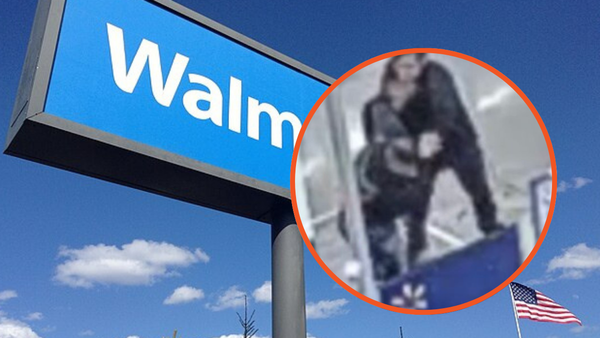They have been pouring into emergency rooms around the nation all summer, their bodies bearing a blend of injuries that doctors normally associate with victims of car wrecks — broken noses, wrists and shoulders, facial lacerations and fractures, as well as the kind of blunt head trauma that can leave brains permanently damaged.
When doctors began asking patients to explain their injuries, many were surprised to learn that the surge of broken body parts stemmed from the latest urban transportation trend: shared electric scooters.
In Santa Monica, Calif. — where one of the biggest electric-scooter companies is based — the city’s fire department has responded to 34 serious accidents involving the devices this summer. The director of an emergency department there said his team treated 18 patients who were seriously injured in electric-scooter accidents during the final two weeks of July. And in San Francisco, the doctor who runs the emergency room at a major hospital said he is seeing as many as 10 severe injuries a week.
“Injuries are coming in fast and furious,” said Michael Sise, chief of medical staff at Scripps Mercy Hospital in San Diego, noting that his team saw four severe scooter injuries last week. “It’s just a matter of time before someone is killed. I’m absolutely certain of it.”
The Washington Post interviewed emergency-room physicians in seven cities, including Austin, Atlanta and Nashville, with doctors in each place reporting a spike in severe accidents after the devices launched on their streets. No national data on scooter injuries exist yet.
As the injuries pile up in cities across the country, the three largest scooter companies — operating under the names Bird, Lime and Skip — have seen their values soar as they attempt to transform urban transit, following the successes of ride-hailing and bike-sharing companies. The scooter start-ups have attracted massive investments from Uber, the prominent technology venture capital firm Sequoia Capital and Alphabet, Google’s parent company, with some analysts estimating that some of the privately held companies might be worth more than $1 billion.

John Montgomery, 47, says he was riding a Bird scooter in July when it malfunctioned, throwing him into the street head first and knocking him unconscious. (Courtesy of John Montgomery)
But a growing number of critics — including doctors, former riders, scooter mechanics and personal injury lawyers — say the devices may look like toys but inflict the same degree of harm as any other motorized vehicle on the road, only without having to comply with safety regulations. These critics add that some electric-scooter fleets are poorly maintained by a loose-knit flock of amateur mechanics, making them prone to dangerous mechanical failures.
Responding to questions from The Post about the wave of injuries, the scooter companies said safety is a top priority. Bird, Lime and Skip say their apps and labels on the scooters contain basic safety information, as well as training instructions. Bird requires users to upload a driver’s license and confirm they’re at least 18 years old.
Bird and Skip have programs that give helmets to riders who request them, and Lime notes that riders must go through an “in-app tutorial” on helmet safety to unlock one of the company’s scooters for the first time.
“We also strive to reduce injuries though our vehicle design and include key safety features such as headlights and taillights, independent suspension, and a wider and higher footboard to improve stability,” a statement from Skip said.
But Bird is also lobbying against legislation in California that would require users to wear helmets.
Once injured, many riders might discover from the vehicles’ user agreements that they cannot file lawsuits because of clauses requiring that disputes be resolved by arbitration.
What’s more, the firms acknowledge that they can’t always know about serious mechanical problems in their vehicles unless riders flag problems. Indeed, the scooter companies are still learning how their vehicles perform in various weather conditions and from regular use, according to a senior executive at one of the three companies who spoke on the condition of anonymity to talk freely about industry challenges.
Philip Rosescu, a senior forensic engineer at Wexco, a firm that specializes in accident reconstructions, said that this kind of “reactive system” often requires a complaint or an incident before repairs are initiated.
“Enterprise Rent-A-Car is not going to rely on renters and drivers to report that the brake fluid needs to be refilled or when the windshield wipers need to be changed,” he said. “Being reactive in the transportation industry is very dangerous.”
Some former mechanics and riders say a core problem is that the companies are doing a poor job of maintaining the scooters.
Posts on Craigslist feature dozens of ads for scooter mechanics. Though some job ads ask for previous electronic repair experience, others, like those posted by Bird, say applicants need only a vehicle and a smartphone to qualify for a position. Those who are hired are trained by watching YouTube videos, current and former company employees say.
In a statement responding to questions about its training methods, Bird said the company uses “a number of tools and mechanisms” to train its network of scooter chargers and mechanics.
“As new best practices are developed, we look to roll these out as well and are continually educating our Chargers and Mechanics,” the company said. It added that its vehicles are inspected once they’re collected by chargers and mechanics each evening. If inspections reveal that repairs need to be made, “experienced mechanics” perform the necessary repairs, the company said.
But Fahin Kamrany, a former Bird mechanic in Santa Monica who plans to sue the company, says mechanics are pressured to repair at least three scooters a night or risk being fired, even when spare parts from China are in short supply. Text messages between Kamrany and a Bird supervisor that she provided to The Post appear to show delays and difficulties in ordering and acquiring spare parts for broken scooters.
The 57-year-old says she was performing a required diagnostic test when she fell off a scooter with defective brakes, sustaining a severe head injury, a broken clavicle and $15,000 worth of medical bills.
“I encountered many scooters that had bad brakes or a sticky accelerator,” she said in an interview. “If you pressed the accelerator, it would become stuck in that position, and you’d be unable to stop the scooter from racing forward at full speed.”
When asked about Kamrany’s remarks, Kenneth Baer, a Bird spokesman, said the company does not “comment on specific claims or allegations we receive.”
For its part, Lime says it has local teams in charge of inspecting and maintaining scooters. The company says it recently added a feature that enabled chargers to take broken scooters off the street.
Skip said its scooters undergo “regular safety checks” and are “taken out of service for repairs” or if riders flag performance issues. The company said it relies on staff, contract mechanics and independent repair shops to maintain its fleet.
At his Santa Monica emergency room, Wally Ghurabi — director of the Nethercutt Emergency Center at UCLA Medical Center — said most of the injured riders he treats are not teenagers but adults of all ages, including one man approaching 70.
He blames the scooters — left all over the city to be rented by anybody with a smartphone — for giving customers a false sense of security.
“When I see people using the scooters, they’re smiling and having fun,” said Ghurabi, whose team treated the 18 patients seriously injured in electric-scooter accidents during the final two weeks of July. “But if you lose control and get ejected into the air at 15 miles per hour and land on your head in the street, that’s enough force to kill you — and almost nobody on these scooters is wearing a helmet.”
Indeed, although Bird urges users to wear a helmet to ride its scooters, the company is also supporting a bill in California that would exempt riders from wearing one.
Bird explained its position by noting that California does not require helmets for adults riding electric bikes, which travel at similar speeds to electric scooters.
“Our goal in supporting this legislation continues to be providing riders of shared e-scooters and e-bikes with more consistent ridership rules so that people can more easily embrace sustainable shared mobility options,” the company said. “We are pleased that the California State Senate shares this view and helped move this bill one step closer to becoming law.”
“Still, Bird strongly encourages all riders to wear helmets and ride safely,” the company added.
The injured might quickly discover that their ability to sue the scooter industry is limited.
Bird and Lime, the two biggest companies, require consumers to agree to not sue — either individually or as part of a class-action suit — and instead turn to a form of mediation known as “binding arbitration” as a condition of using their scooters. They both name specific arbitration companies, while Bird also names a preferred location for arbitration and Lime requires users to first engage in a 60-day “dialogue” with the company.
Bird says its user agreement “represents an industry standard” among “transportation technology companies.”
Skip recently informed users that its arbitration agreement would be binding for users beginning Friday. Skip said the company is adding the arbitration provision as part of a revamp of its user agreement as the firm expands across the country. In a statement, Skip said the changes “make the terms and conditions more clear, more informative, and more efficient.”
Consumer advocates have long criticized binding arbitration as putting consumers at a disadvantage. Arbitration clauses — often appearing as fine print in user agreements and employee contracts — have become a defining feature of corporate contracts used by many of the nation’s most recognizable brands across multiple industries.
Arbitration clauses are also popping up in contracts for services that involve physical risk, such as rental car contracts, skate parks, and major theme parks such as Universal Studios and Six Flags. Bike-share programs, such as the District’s Capital Bikeshare and LimeBike, which also offers electric scooters, have also turned to arbitration.
“When it comes to binding arbitration, companies have a leg up in so many ways,” said Remington A. Gregg, the counsel for civil justice and consumer rights at Public Citizen, a nonprofit consumer advocacy organization.
Not every company is relying on arbitration. This spring, Uber stopped requiring passengers saying they experienced sexual harassment or assault to go through binding arbitration after an outcry that the ride-hailing service was seeking to protect its drivers from claims of sexual misconduct.
Electric scooters have arrived as bike-share systems have also spread across the country. The two businesses face some of the same challenges — heavy use, mechanical failure and vandalism. Capital Bikeshare, which has more than 4,300 bikes in the D.C. region, said it employs trained technicians who have maintenance experience and perform daily inspections of bicycles and bike-share stations.
The District has seen a slight rise in injuries related to electric scooters since their introduction but not one as significant as in other cities, a doctor at George Washington University Hospital said — possibly because of the proliferation of bike lanes in the city.
When it comes to scooters, the manufacturer’s guidelines say the devices should not be left out overnight, but often, in Santa Monica, “they’re left on parkways, hit by sprinklers and saltwater and subject to tremendous abuse by the public,” said Catherine Lerer, a Santa Monica personal injury lawyer who has received around 100 calls from people injured by scooters in recent months.
One of those who may join the wave of lawsuits against the scooter companies is John Montgomery. The 47-year-old says he had been riding his Bird for only a few blocks in July when the accelerator became stuck in place as he approached a Los Angeles intersection, causing the scooter to “buck forward” and launch his body past the handle bars.
Montgomery awoke to the sight of a stranger standing over him and calling an ambulance. He had landed on his face, he said, breaking his jaw in two places and causing blood to pour from his ears.
“They took me to the emergency room crying and screaming,” he said. “I had never been in so much pain in my life.”
Montgomery, who plans to sue Bird, spent nearly a week in the hospital. He remains on painkillers and continues to consume meals through a straw. He has had to miss work and feels nervous each time he has to cross a street.
“These companies are just getting these scooters out there as fast as they can, but they’re not servicing them and checking them for safety,” he said. “I honestly don’t think they give a damn if I lived or died.”
He hasn’t heard from Bird but recently noticed that the company charged him for the period of time he lay on the street, bloodied and unconscious.








